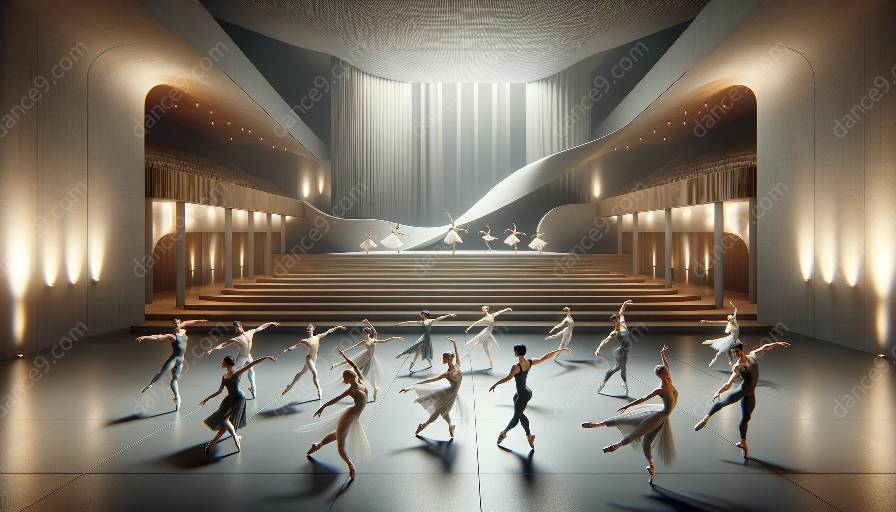When discussing the impact of neo-classical ballet on the overall aesthetic and visual presentation of dance performances, it is essential to delve into the historical and theoretical aspects of ballet. Neo-classical ballet, with its fusion of tradition and innovation, has significantly influenced the aesthetics and visual appeal of dance, shaping the art form in profound ways.
Evolution of Classical Ballet
Classical ballet, with its origins in the Italian Renaissance courts and later flourishing in France and Russia, initially emphasized grace, precision, and storytelling through dance. It often featured elaborate costumes, intricate footwork, and a focus on narrative-driven choreography. However, during the 20th century, a renewed interest in the purity of movement and abstract expression led to the development of neo-classical ballet.
Neo-Classical Ballet and Aesthetics
Neo-classical ballet, pioneered by choreographers such as George Balanchine and Serge Lifar, departed from the narrative-driven approach of classical ballet and embraced a more abstract and geometric aesthetic. This shift allowed for a greater focus on dancers' technical abilities and the exploration of innovative movement vocabulary, thereby transforming the visual presentation of dance performances.
In neo-classical ballet, the emphasis on clean lines, athleticism, and musicality contributes to a visually striking experience for audiences. Dancers often execute intricate, asymmetrical formations and dynamic spatial patterns, challenging traditional notions of symmetry and balance in choreography. Moreover, the minimalist stage design and streamlined costumes associated with neo-classical works further enhance the visual impact of performances, allowing the choreography and dancers' movements to take center stage.
Impact on Dance Theory
From a theoretical standpoint, neo-classical ballet has expanded the boundaries of dance composition and technique, influencing how choreographers approach the visual aspects of their work. The emphasis on dynamic, angular movement, and the exploration of space and rhythm has broadened the possibilities for crafting visually compelling dance performances.
Legacy and Contemporary Influence
The legacy of neo-classical ballet continues to resonate in contemporary dance, inspiring choreographers to push artistic boundaries and experiment with visual aesthetics. Its influence can be seen in the fusion of classical and modern dance techniques, as well as the continued exploration of abstraction and athleticism in choreographic works.
In conclusion, neo-classical ballet has left an indelible mark on the overall aesthetic and visual presentation of dance performances. Its fusion of tradition and innovation, coupled with a focus on clean lines, athleticism, and minimalism, has redefined the visual language of ballet and continues to inspire new generations of dancers and choreographers.





























